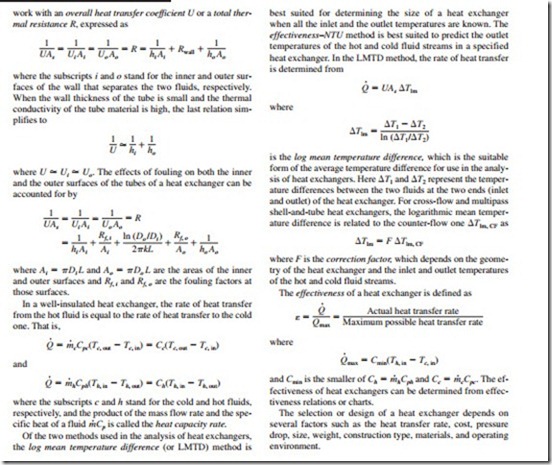SUMMARY
Heat exchangers are devices that allow the exchange of heat between two fluids without allowing them to mix with each other. Heat exchangers are manufactured in a variety of types, the simplest being the double-pipe heat exchanger. In a parallel-flow type, both the hot and cold fluids enter the heat exchanger at the same end and move in the same direction, whereas in a counter-flow type, the hot and cold fluids enter the heat exchanger at opposite ends and flow in opposite directions. In compact heat exchangers, the two fluids move perpendicular to each other, and such a flow configuration is called cross-flow. Other common types of heat exchangers in industrial applications are the plate and the shell-and-tube heat exchangers.
Heat transfer in a heat exchanger usually involves convection in each fluid and conduction through the wall separating the two fluids. In the analysis of heat exchangers, it is convenient to